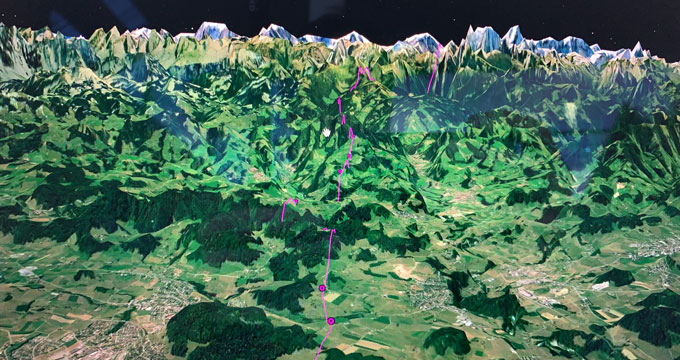Sitting alone in the cockpit of a small biplane, Martin Wikelski listens for the pings of a machine by his side. The sonic beacons help the ecologist stalk death’s-head hawkmoths (Acherontia atropos) fluttering across the dark skies above Konstanz, Germany — about 80 kilometers north of the Swiss Alps.
The moths, nicknamed for the skull-and-crossbones pattern on their backs, migrate thousands of kilometers between northern Africa and the Alps during the spring and fall. Many migratory insects go where the wind takes them, says Ring Carde, an entomologist at the University of California, Riverside who is not a member of Wikelski’s team. Death’s-head hawkmoths appear to be anything but typical.
“When I follow them with a plane, I use very little gas,” says Wikelski, of the Max Planck Institute of Animal Behavior in Munich. “That shows me that they are supposedly choosing directions or areas that are probably supported by a little bit of updraft.”
A new analysis of data collected from 14 death’s-head hawkmoths suggest that these insects indeed pilot themselves, possibly relying in part on an internal compass attuned to Earth’s magnetic field. The moths not only fly along a straight path, they also stay the course even when winds change, Wikelski and colleagues report August 11 in Science.
The findings could help predict how the moths’ flight paths might shift as the globe continues warming, Wikelski says. Like many animals, death’s-head hawkmoths will probably move north in search of cooler temperatures, he suspects.
To keep tabs on the moths, Wikelski’s team glued radio transmitters to their backs, which is easier to do than one might expect. “Death’s-head hawkmoths are totally cool,” Wikelski says. They’re also huge. Weighing as much as three jellybeans, the moths are the largest in Europe. That makes attaching the tiny tags a cinch, though the moths don’t like it very much. “They talk to you, they shout at you a little bit,” he says.

Once the researchers set the newly tagged and slightly annoyed moths free, Wikelski took off after them in a plane. As the insects flew south toward the Alps, a device onboard pinged the transmitters at a frequency related to the moths’ distance from the plane.
While detailed tracking of eight of the moths allowed him to follow the insects for about 63 kilometers on average, he pursued one for just under 90 kilometers. That’s the longest distance that an insect has been continuously tracked, he says. “It’s outrageously crazy work,” he says of the night flights at low altitude. “It’s also a little dangerous and it’s just showing it’s possible.”


